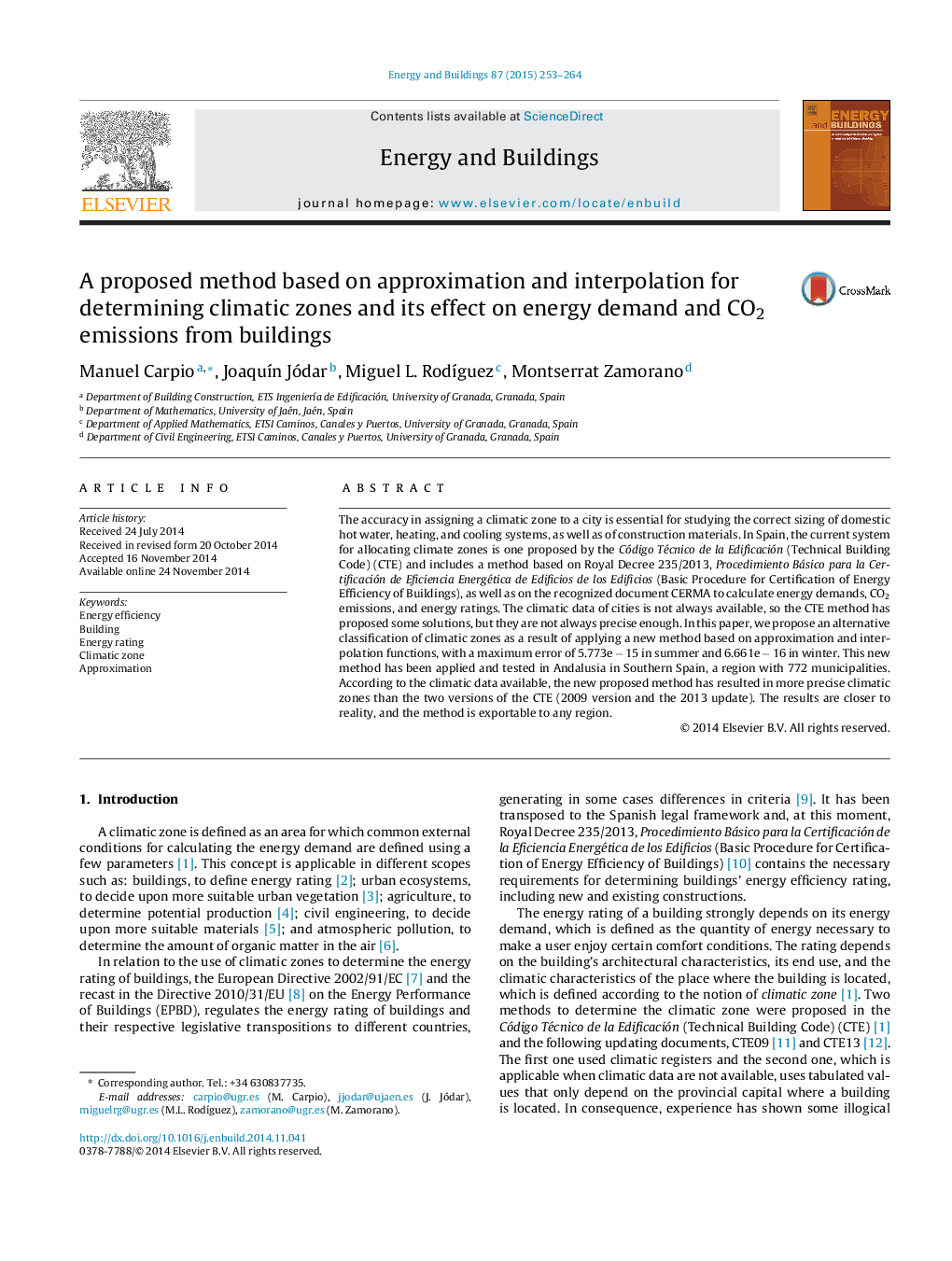| Article ID | Journal | Published Year | Pages | File Type |
|---|---|---|---|---|
| 6732471 | Energy and Buildings | 2015 | 12 Pages |
Abstract
The accuracy in assigning a climatic zone to a city is essential for studying the correct sizing of domestic hot water, heating, and cooling systems, as well as of construction materials. In Spain, the current system for allocating climate zones is one proposed by the Código Técnico de la Edificación (Technical Building Code) (CTE) and includes a method based on Royal Decree 235/2013, Procedimiento Básico para la Certificación de Eficiencia Energética de Edificios de los Edificios (Basic Procedure for Certification of Energy Efficiency of Buildings), as well as on the recognized document CERMA to calculate energy demands, CO2 emissions, and energy ratings. The climatic data of cities is not always available, so the CTE method has proposed some solutions, but they are not always precise enough. In this paper, we propose an alternative classification of climatic zones as a result of applying a new method based on approximation and interpolation functions, with a maximum error of 5.773e â 15 in summer and 6.661e â 16 in winter. This new method has been applied and tested in Andalusia in Southern Spain, a region with 772 municipalities. According to the climatic data available, the new proposed method has resulted in more precise climatic zones than the two versions of the CTE (2009 version and the 2013 update). The results are closer to reality, and the method is exportable to any region.
Related Topics
Physical Sciences and Engineering
Energy
Renewable Energy, Sustainability and the Environment
Authors
Manuel Carpio, JoaquÃn Jódar, Miguel L. RodÃguez, Montserrat Zamorano,
